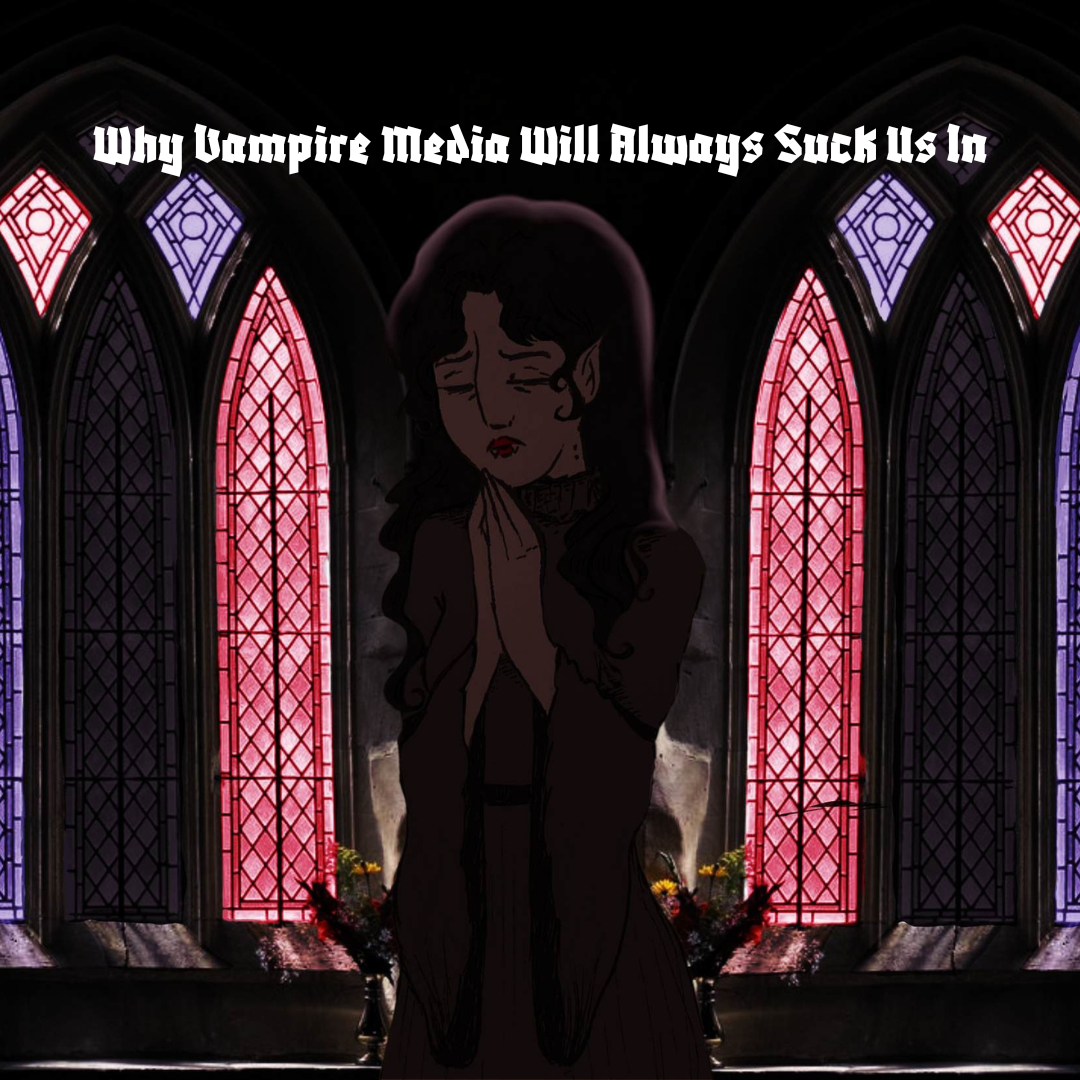Please visit response.fsu.edu for official FSU updates and resources.
Why Vampie Media Will Always Suck Us In

Vampires have been sinking their (not so metaphorical) fangs into the human imagination for centuries and show no signs of stopping anytime soon. They’ve been a part of our narratives as everything from sinister revenants haunting village sewers to immortal heartthrobs trying to pass highschool chemistry. They’re the ultimate survivors, reinvented again and again to fit each generation's fears, fantasies, and curiosities. But, what is it about vampires that’s so appealing?
A Fang-tastic History
In order to determine why the modern vampire is so appealing, we have to look at their origins. Early vampire myths are scattered across Eastern Europe but have been particularly attributed to Bulgarian folklore, dating back around a thousand years ago. In these legends, vampires were a kind of monster in the vein of poltergeists and malevolent spirits, often taking on incorporeal shapes. There was no blood sucking or evening attire to be found. They were just souls who’d come back when they couldn’t accept a physical death because they didn’t know if they’d ever find the peaceful afterlife. Human fears haven’t changed much in all these years.
In 1686, the Holy Roman Empire gained occupation of Hungary, where German-speaking soldiers overheard vampire legends from peasants. At the time, vampires were the explanation for a number of things– rabies, plague, ritualistic blood sacrifices. Soldiers took the legend with them to cities like Vienna and Berlin, and later Paris and London, with the monster gaining new attributes as it went. By the time it was cemented in Western culture, vampires were corporeal figures and needed to consume blood.
In the 19th century, vampires grew into something more complex. Varney the Vampire, an 1840s penny dreadful, is one of the earliest portrayals of the so-called modern vampire. Varney was charismatic, yet tormented and established a number of tropes, like fanged bites and dramatic seduction. These tropes were later refined in 1872 in Carmilla by Sheridan Le Fanu, who introduced a female vampire with the power to seduce her victims. This set the stage for the charm that’d root itself in vampire media.
Bram Stoker published Dracula in 1897 which solidified the vampire’s place in popular culture. The novel’s Count Dracula was frightening and rather ugly. Once the character was reimagined for plays, he became the sympathetic anti-hero he’s more commonly associated with. Part of this was to appeal to wider audiences but another part was inherently practical. For example, the count was given his token high-collared cloak to better hide the actor leaving the stage. Stoker’s novel intensified the vampire’s connection to seduction, fear, and otherness, as well as devised what is now seen as the quintessential vampire.
In 1976, Anne Rice’s Interview with the Vampire brought another layer of complexity to the vampire. Her vampires were highly introspective. She explored what it truly meant to live forever, caught in the unending cycle of desire and despair. This was, without a doubt, due to her own experiences with death and grief, particularly over her own daughter’s, who inspired the immortal child Claudia. The Bulgarian proto-vampires were born out of a fear for the other side, but Rice expanded this idea to include a fear of never reaching it.
Vampires have continued to thrive in modern media. Buffy the Vampire Slayer introduced us to Spike and Angel, each with their own issues of morality. Castlevania reimagined Dracula in video games. What We Do in the Shadows showed us vampires in a more everyday light. And Twilight gave us Edward Cullen, who sparkled.
Why We’re Under Their Spell:
Vampire works often deal with themes of the other. They come from weird places, exist on society's fringes. They’re creatures who are undeniably human and undeniably aren’t. In early folklore, this otherness was terrifying. Vampires represented a direct threat to the community, burning villages and killing peasants. Then came Count Dracula, a foreigner who disrupted the stability of English high society. This theme evolved in modern narratives as vampires became more sympathetic. Otherness came to represent how the vampires were isolated from human society. They became relatable.
Vampires also offer a space to explore queerness. Desire being a core part of their characters allows them to transcend traditional boundaries. Carmilla was considered extremely subversive for its titular character’s attraction to women. Vampires are allowed to transform, to pass between worlds, and to live outside the norm. Their inclusion of these topics have led many to find them a fitting archetype for LGBTQ+ narratives.
There’s also a certain appeal that comes from immortality. Humans are fascinated with death and what comes after. Vampires represent the in between. From my standpoint as a writer, immortality goes hand in hand with history. Vampire characters can see centuries of history unfold and have experiences beyond what any human could achieve. And it all comes with the dark twists of seeing loved ones die and existing in existential loneliness. This duality allows us to explore our own complicated thoughts on mortality.
A Trend That Just Won’t Die:
Vampires will continue to be reimagined time and time again because they tap into some of our deepest fears, desires, and questions. They can be adapted to any era or genre and evolve to fit changing societal concerns. No matter how much they change, they represent the part of humanity that’s fascinated with mystery, danger, and the thrill of eternity. As long as we’re equally curious and scared about what lies beyond this life, vampires will continue to rise from their graves. And okay, maybe some of it is just that they’re hot.
Writer: Darby Shelton
Artist: Brooke Barnes



